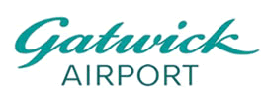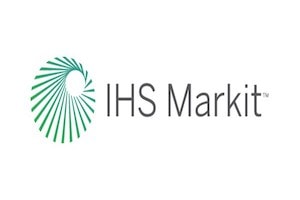You Ask, We Answer: A Comprehensive Review of Grafana
Here at Sirius Open Source, we often get asked, "What is the overall review of Grafana? Is it really the single-pane-of-glass solution it claims to be?" This is a very good question, and one that deserves a clear, honest answer. We understand the obsession we all have with reviews and rankings before making major decisions.
We want to be upfront: Grafana has become the ubiquitous operating system for observability, and its ability to unify disparate data sources (the "single pane of glass") remains its most compelling feature. However, the truth is, deploying it successfully at enterprise scale is not a "set and forget" activity. It requires deliberate governance and specialized expertise to overcome architectural complexity and licensing hurdles.
This article will provide a comprehensive review of Grafana’s architectural principles, the strategic bifurcation between its Open Source and commercial tiers, and the specialized ecosystem needed to ensure its long-term viability within your enterprise. We aim to be fiercely transparent, allowing you to make the most informed decision possible.
Grafana’s Core Value Proposition: Unify, Don't Ingest
Grafana’s position as the premier observability visualization tool is secured by its foundational architectural philosophy, which strategically addresses the challenges of data gravity and vendor lock-in.
Agnostic Architecture and the Observability Paradigm
Grafana transcends traditional "monitoring" by enabling operators to infer a system's internal state from its external telemetry (observability).
Data Strategy: Unlike proprietary vendors that require data ingestion into their proprietary storage, Grafana operates on a "bring your own data" model. It acts as a translation and visualization layer that queries data where it lives, whether that is a time-series database like Prometheus, a relational database like PostgreSQL, or a cloud API like AWS CloudWatch.
Vendor Lock-in Mitigation: This model is critical for hybrid cloud strategies, allowing organizations to maintain a "best-of-breed" storage setup while minimizing data egress costs and mitigating vendor lock-in risks.
The LGTM Stack (Open Source Cohesion)
While remaining data-source agnostic, Grafana Labs provides a tightly integrated Open Source stack that serves as a comprehensive alternative to proprietary Application Performance Monitoring (APM) suites.
| Component | Function | Key Advantage |
|---|---|---|
| Loki | Log Aggregation | Indexes only metadata (labels), drastically lowering storage costs compared to full-text indexing. |
| Mimir | Metrics Storage | Provides long-term, horizontally scalable storage for Prometheus metrics. |
| Tempo | Distributed Tracing | Visualizes request lifecycles across microservices. |
The Powerful Enterprise Plugin Ecosystem
The versatility of Grafana is driven by its extensible plugin architecture, which currently supports over 100 data sources. The commercial Grafana Enterprise tier elevates this capability by including Premium Plugins.
Unification Capability: Enterprise plugins enable Grafana to integrate data from proprietary monitoring tools (e.g., Datadog, Splunk, New Relic) and large enterprise systems (e.g., ServiceNow, Jira, Salesforce). This allows the platform to act as a "manager of managers," providing a unified interface across fragmented legacy tools, which is strategically valuable during migration periods.
Visualization: Grafana offers specialized visualization panels like Geomaps, Heatmaps, and Node Graphs for distributed systems, along with core Time-Series Graphs. It also supports Library Panels, ensuring metric definitions are standardized across multiple dashboards.
Architectural Challenges and Operational Burden
Grafana’s flexibility introduces structural fragilities and governance burdens, turning it from a simple utility into a complex platform requiring specialized care.
Governance: Dashboard Sprawl and ClickOps
Scaling Grafana often leads to "Dashboard Sprawl," where temporary, ad-hoc dashboards proliferate rapidly, lack documentation ("ghostware"), and dilute the value of the platform.
GitOps Friction: Mature organizations need to transition from manual editing ("ClickOps") to a GitOps workflow, managing dashboards as code (JSON) in version control systems. However, the native JSON export format is notoriously monolithic and unreadable, complicating code reviews and creating frequent merge conflicts.
Mitigation: Grafana v12 has introduced native Git Sync features to bridge the gap between the visual editor and version control. Administrators in Enterprise can also use Usage Insights to identify and archive "zero view" dashboards, improving system hygiene.
Performance Limitations and Cost Optimization
The complexity of high-cardinality data exposes the weaknesses of Grafana's client-side rendering model, leading to performance constraints.
The Rendering Cliff: High-cardinality data causes the Grafana frontend to bear a heavy processing load, risking a "rendering cliff" failure where the browser memory is exhausted, causing the tab to crash or dashboards to fail during critical incidents.
Tuning Necessity: Performance requires aggressive tuning, such as optimizing query resolution (downsampling/LTTB) and implementing caching layers to protect backend databases. Grafana Cloud features Adaptive Metrics to automatically aggregate unused high-cardinality data *before* long-term storage, which can reduce metric bills significantly.
Commercial Strategy and Licensing Review
Grafana Labs utilizes an open core model where the licensing decision hinges on enterprise requirements for security and support.
Open Source vs. The Mandatory Security Tax
The core software is open source (AGPLv3), which promotes widespread adoption. However, core security and compliance features are reserved for the Enterprise tier, creating a "security tax".
Gated Features: Features necessary for maintaining proper security posture and regulatory compliance, such as SAML, Enhanced LDAP, Audit Logs, and detailed Role-Based Access Control (RBAC), are exclusive to Enterprise and Cloud tiers. For organizations in regulated industries (finance, government, healthcare), these become a mandatory cost driver.
Grafana Cloud: Offloading Operational Risk
Grafana Cloud provides a managed, OpEx-based alternative for organizations wishing to offload the substantial operational burden of running distributed observability components (Mimir, Loki, Tempo).
Predictable Billing: Grafana Cloud’s usage-based model is differentiated by its 95th percentile billing model for metrics. This feature effectively excludes the top 5% of usage spikes (about 36 hours monthly), providing financial predictability and acting as insurance against cost overruns from incidents or load testing.
TCO Driver: For most enterprises, the high, fixed cost of specialized SRE labor required to manage the self-hosted stack (which often exceeds $200,000 per burdened FTE) makes migrating to the managed service fiscally preferable.
The Strategic Role of Commercial Support
The complexity of designing and maintaining a high-scale Grafana deployment has fostered a robust ecosystem of third-party service providers.
Grafana Labs Support: Grafana Labs offers Professional Services to accelerate adoption and minimize risk. Their Premium support tiers offer guaranteed response times for critical issues, such as 30 minutes for P1 (Critical) disruptions.
Third-Party Expertise: The ecosystem includes Managed Service Providers (MSPs), like InfraCloud and Ksolves, who offload operational responsibility (including 24/7 incident response), and Specialized Technical Consultancies, like Prodshell, who focus on optimization and custom solutions. Sirius is positioned as a Strategic Integrator focusing on high-level concerns like risk management, compliance, and cloud-native expertise. By providing comprehensive services (consulting, managed services, strategic integration) Sirius minimizes execution risk and vendor fragmentation.
Summary: Final Assessment and Strategic Recommendation
Grafana is the de facto open standard for observability interaction. Choosing Grafana is a strategic decision rooted in prioritizing autonomy, cost control, and technical depth.
| Priority | Strategy | Recommendation |
|---|---|---|
| Control & Cost Efficiency | Self-Host/Hybrid with Managed Backends | Grafana provides maximum flexibility but requires significant governance investment. |
| Security & Compliance | Mandate Enterprise License | Access to essential security features (SAML, RBAC) is gated, regardless of hosting location. |
| Labor Arbitrage | Choose Managed Service | Grafana Cloud eliminates the high, fixed cost of internal SRE labor, offering predictability via 95th percentile billing. |
The ultimate review is that Grafana demands discipline: it rewards organizations that invest in governance and optimization, offering long-term vendor neutrality and control. If that discipline is lacking, transferring the operational toil to a managed service provider is the recommended path for minimizing risk and ensuring sustainability.
















































